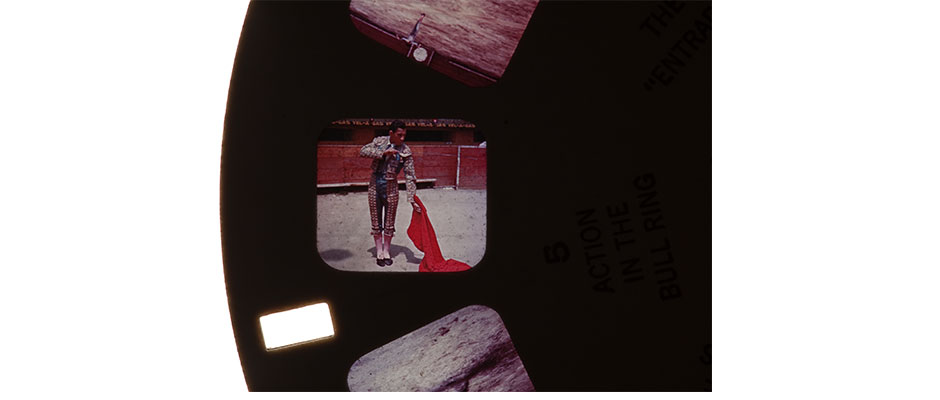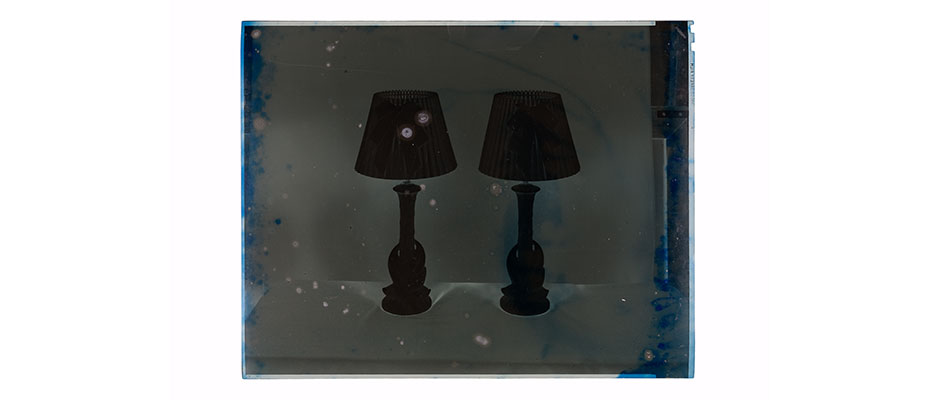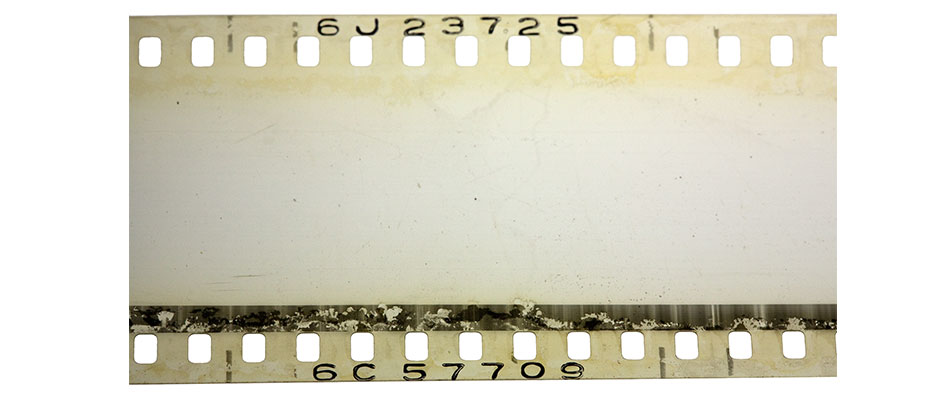


Detail of a Kodachrome Viewmaster slide shows superficial mold growth on the gelatin binder.

When the Kodachrome slide is viewed in transmitted light, as on projection, the mold is not visible. If mold damage is superficial, it may not be visible on duplication or projection.

This Viewmaster slide was stored in damp conditions, causing a superficial layer of mold growth.

This 8x10 acetate negative was likely damaged by water, causing both the growth of mold you see on the gelatin layer and the retrieval of anti-halation dyes in the gelatin layer on the reverse side of the film (here seen as a bright blue dye).

Mold on this 35mm nitrate negative has destroyed the variable density soundtrack. This film was stored in damp conditions, causing mold to grow from the edges of the film inward. While the picture negative of this film was recovered before mold could affect the image area, mold growth was disastrous for the soundtrack element.
What it is and what causes itMold can attack the gelatin binder of any film format. Gelatin provides food for mold spores, and mold will grow on film stored in high humidity environments, particularly when the relative humidity exceeds 65%. Although some film stocks are manufactured with fungicides incorporated into the gelatin, mold growth cannot be prevented with additives.Mold may appear as white round spots or irregular clumps on the surface of the emulsion. Mold spores can appear on the outside of film rolls as a white powdery or web-like substance. Mold may also burrow deep into the gelatin layer, appearing as small dull spots, clotted irregular areas, or in channel-like formations. In some cases, active mold growth can soften the gelatin. Although mold and on film often appears white, it can also appear brown or black. |
What you can doMoldy film can present serious health risks and should always be handled with care. When encountering moldy film, the first course of action should be to consult with an experienced professional. Any handling of a moldy film should be done in a well-ventilated area, with adequate protective clothing. Use of a mask or ventilator is recommended, particularly when dealing with active mold spores. When visual inspection of a film roll reveals mold in the form of powder or webs, clean the outside of the film pack with a soft rag before proceeding to unwind the film.Some mold can be removed with solvents from the film, but in cases of active mold, and in cases where the gelatin has softened, exercise care before using solvents, as these may damage the gelatin further. Once mold has eaten into the gelatin, the damage is irreversible. To prevent or arrest mold growth, store films in a low humidity environment, preferably an environment that is cold as well as dry. |
At Risk
|